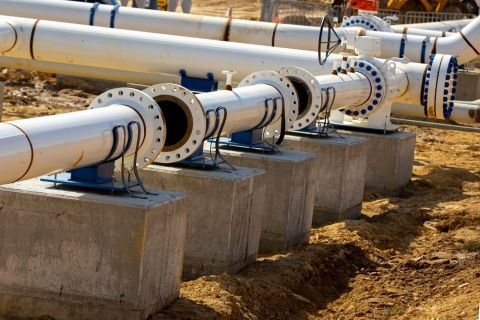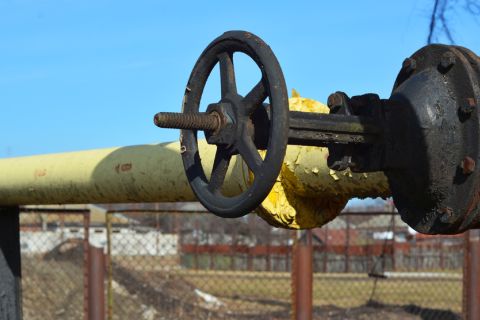Presented by:

Editor's note: This article appears in the E&P newsletter. Subscribe here.
Consider these two numbers:
- 80% — how much of our customers’ opex is still spent on asset integrity management
- Less than 1% — the amount of available datasets that are being fully exploited in the oil and gas industry
What does this tell us? That of all the resources available, data are seriously underutilized in the oil and gas sector, and it’s taking a toll on the ability to reduce overall expenditure, to manage assets efficiently and effectively, and to reduce the carbon intensity of operations.
The oil and gas industry needs a better way to use the vast volumes of data it possesses and meet the demands of regulators, customers, investors and wider society.
This is the driving idea behind Baker Hughes’ development of engageSubsea. It allows customers to travel in time by using data to predict well behavior while maximizing the life span of their fields. As a real-time platform for proactive asset management and instant troubleshooting, with engageSubsea Baker Hughes can create full-scale digital enablement for all its customers.
This enables the proactive management of the entire asset life cycle in three very distinctive ways: predicting degradation and failure of subsea and topside assets; supporting live operations safely and remotely; and supporting effective operations planning.
For example, one of Baker's customers required some urgent reliability analysis for control systems on their field in the North Sea. Their installed systems and equipment had been sourced from several original equipment manufacturers over the years, and rapidly identifying the components posing the highest obsolescence risk was a major task.
As customers can also integrate their own datasets to engageSubsea, this allows them to extract economic modeling on the impact on production revenues from their equipment.
Overall, engageSubsea can deliver 20% costs saving compared with previous obsolescence management interfaces, before considering the additional value derived from other platform features.
Production efficiency and asset health monitoring is important as companies consider both cost savings and their emissions. Enhancing engageSubsea’s predictive and monitoring capabilities for both new and existing assets allows Baker Hughes to give its customers immediate notification so they can anticipate any potential challenge with the technology, as well as early identification of system degradation, as part of the natural life-cycle process of any field. Coupled with the experience and input from Baker Hughes’ own subject matter experts (SMEs), this gave immediate valuable support to its customers’ decision-makers.
The most recent upgrade to engageSubsea is the addition of remote activities, engageSubsea Remote, a cloud-based audio/video platform that accurately captures and delivers high-resolution images of remote equipment through low-bandwidth networks. Customers have used engageSubsea Remote to digitally sign off final inspections, HSE audits, pressure tests and factory acceptance tests as well as provide offshore support.
In one case, one of Baker's Australian customers needed to recertify its BOP stack but had to keep the relevant SME at home due to COVID-19 travel restrictions. Through engageSubsea Remote, the SME could certify the equipment remotely and operations could continue without interruption, avoiding non-value-added time from a potential rig-down situation.
Others are using the engageSubsea platform to understand redundancy status of specific systems, to minimize unplanned interventions or to support life-of-field extension strategies.
engageSubsea has been designed to ultimately help users achieve three specific outcomes: accelerate time to production, reduce TOTEX and maximize recovery.
Recommended Reading
For Sale? Trans Mountain Pipeline Tentatively on the Market
2024-04-22 - Politics and tariffs may delay ownership transfer of the Trans Mountain Pipeline, which the Canadian government spent CA$34 billion to build.
Equitrans Delays WV-VA Mountain Valley Natgas Pipe Again, Boosts Cost
2024-02-20 - U.S. energy firm Equitrans Midstream delayed the estimated completion of its Mountain Valley natural gas pipeline from West Virginia to Virginia to the second quarter from the first quarter due in part to adverse weather in January.
Apollo Buys Out New Fortress Energy’s 20% Stake in LNG Firm Energos
2024-02-15 - New Fortress Energy will sell its 20% stake in Energos Infrastructure, created by the company and Apollo, but maintain charters with LNG vessels.
TC Energy, Partner Sell Portland NatGas Transmission System for $1.14B
2024-03-04 - Analysts expect TC Energy to make more divestitures as the Canadian infrastructure company looks to divest roughly $2.21 billion in assets in 2024 and lower debt.
Summit Midstream Sells Utica Interests to MPLX for $625MM
2024-03-22 - Summit Midstream is selling Utica assets to MPLX, which include a natural gas and condensate pipeline network and storage.




